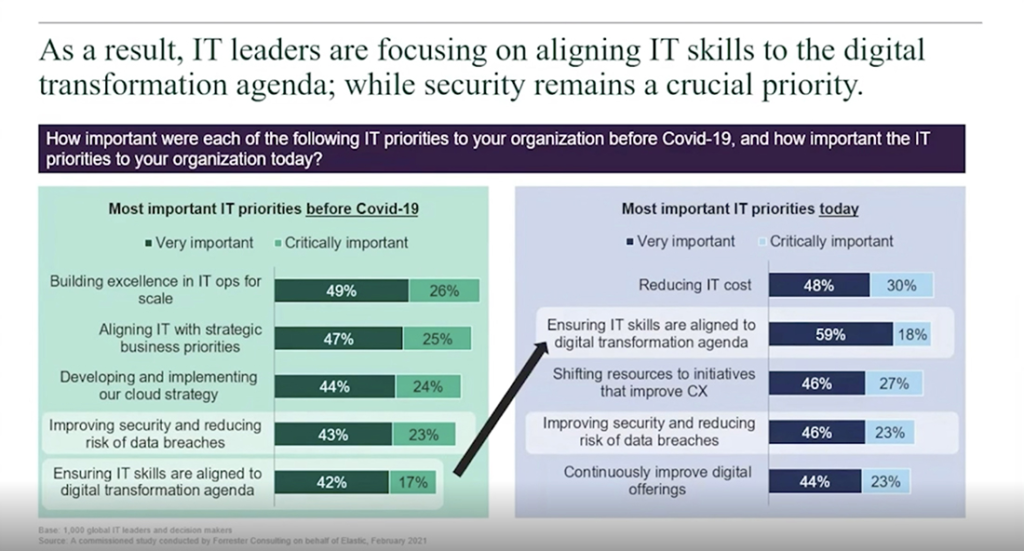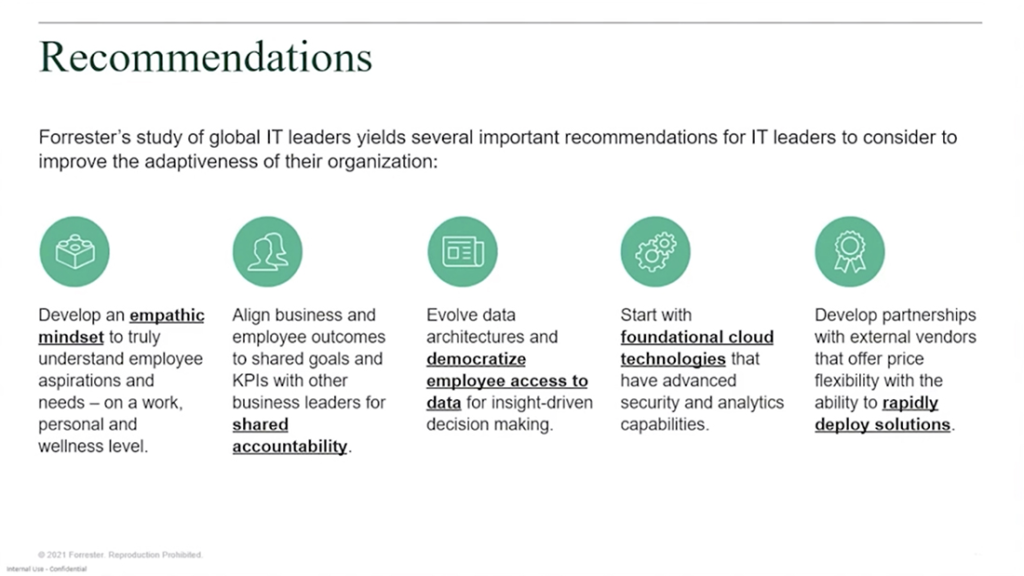Last year, the COVID-19 pandemic placed enterprise IT leaders in the spotlight. Senior leadership realized the importance of technology professionals in maintaining business continuity while shifting to digital communication, collaboration and customer service channels.
Since then, the role of the IT leader has continued to grow in importance, fostering stronger collaborations with line-of-business managers and human resources (HR) executives. In fact, technology is far from the only thing on an IT leader’s mind these days, according to a recent Forrester survey.

“IT leaders are taking on greater responsibilities in setting up adaptive business practices and focusing on employee engagement and well-being,” said Frederic Giron, VP, Research Director, Forrester, at an August 31 BrightTalk webinar, “How Has COVID-19 Changed the Role of the IT Leader.” Other participants in the discussion were Kim Huffman, global VP of IT at Elastic, and Leah Sutton, SVP of Global HR at Elastic.
Giron said Forrester surveyed 1,000 IT leaders from 10 countries to see how priorities had changed from 2019 to 2021. Before COVID, the top three business priorities for the organization were improving the customer experience, growing revenue, and improving products and services. For IT, that translated to building excellence in operations for scale and aligning IT with strategic business goals.
Today, organization’s top priorities are accelerating responses to business and market changes, accelerating the shift to digital business, and improving both the customer and employee experience. “While reducing costs and maintaining security remain high priorities, becoming an adaptive enterprise is vitally important,” he said.
Adaptivity is essential for creating a sustainable business advantage, sustaining business growth and scaling more efficiently, Giron added, noting that 57 percent of IT leaders believe that enabling employees to work more flexibly will improve business adaptability.
One of the keys to achieving that goal is for IT and HR leaders to share goals and key performance indicators (KPIs). Having two leaders with different KPIs can create friction, while an overall alignment can enhance adaptability, he said.
A focus on people
Improving the employee experience is rapidly becoming an important goal for IT leaders, according to the Forrester survey. “Technology adaption is not possible without people,” said Giron. “IT leaders need offer an attractive work experience that allows them to use their talents. They also need to align IT skills with the needs of the enterprise to be sure progress continues toward digital transformation.”
Huffman agreed, noting that the role of technology has evolved from putting the business first to placing the customer at the center of solutions. “Now, we need to put the employees at the heart, building an IT environment that makes them efficient, engaged and empowered,” she said.
That might mean investing in self-service solutions for customers, or making the organization’s knowledge base readily available to contact center agents. “Look for ways to automate and streamline business processes so employees can do things themselves, rather than having to rely on IT,” Huffman said. “Take away the mundane tasks and let them focus on analytics and insights, while working as effectively as possible from any location.”
Recommendations for IT leaders
Summing up the session, Giron offered five recommendations for IT leaders:
1. Develop an empathic mindset to truly understand employee aspirations and needs.
2. Align business and employee outcomes through shared goals and KPIs for shared accountability.
3. Evolve data architectures and democratize employee access to data.
4. Start with foundational cloud technologies with advanced security and analytics.
5. Develop partnerships with vendors that offer price flexibility with the ability to rapidly deploy solutions.

As Huffman said, “IT leaders should think beyond technology and consider employee and organizational resilience. Putting all three together lets the enterprise be adaptive and flexible in today’s fast-changing world.”

